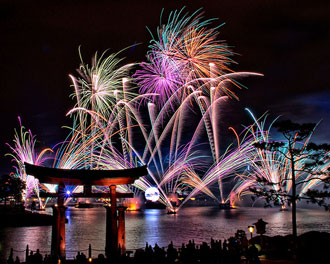It isn’t every month that millions of American schoolkids are forced to write papers on Asian American history. Yes, it’s the start of Asian Pacific Heritage Month and I have my own little writing assignment.
To be honest, I kept flashing on the lyrics, “Baby, you’re a firework!” After all, we invented fireworks. Unfortunately, the song is written by a woman of German, Portuguese, Irish, and English ancestry, according to Wikipedia. Not a drop of Asian blood.
So in my quest for a commemorative theme I cast my sights back down to earth for a more prosaic angle. Call it “Baby, you’re a force for progress!”
After all, a hundred years before McDonald’s we invented America’s original fast food — the Chinese restaurant. All those ex-gold-digging bachelors who weren’t allowed to bring women over or compete for jobs against European immigrants had to cook for themselves. And if you’re going to cook for yourself, you may as well throw in a bit more bean sprouts and a little more rice and make a living at it.
And even the most fervent racists had to admit that the Chinese were the most efficient at laying railroad track when they won the great race to Promontory, Utah on May 10, 1869. (There’s a reason why May was chosen for our month.) The occasion inspired little recognition of the Chinese laborers who braved the treachery of the high Sierras to accomplish a near miracle.
Only later, at a Sacramento speech by E. B. Crocker, brother of Central Pacific General Superintendent Charles Crocker, who had championed the hiring of former Chinese miners to work on the railroad, was there mention of the Chinese role in knitting together the two halves of the continent: “I wish to call to your minds that the early completion of this railroad we have built has been in large measure due to that poor, despised class of laborers called the Chinese, to the fidelity and industry they have shown.”
Crocker probably had in mind the initial response of the Irish construction superintendent J. H. Strobridge to his suggestion for using Chinese workers: “I will not be responsible for work done on the road by Chinese labor.”
Once the railroad opened the flow of immigrants to California, it fell on super-efficient Japanese farmers to feed them. During the 1910s Japanese farmers established truck farms and fruit orchards along the coast, in the Central Valley and Southern California. Kenju Ikuta showed that rice could be produced commercially in the arid soil of California. Later, rice king Keisaburo Koda developed new hardy strains of rice at a ranch in Merced County. Only the industrious, hyper-efficient Japanese could have coaxed so much food from California deserts.
California’s Silicon Valley, which sprouted an entirely new world-changing crop, owes its origins to an electrical engineer born in Shanghai, China. While working as a researcher at Harvard in the late 1940s An Wang and colleague Way-Dong Woo invented the pulse transfer controlling device that enabled the magnetic core memory. Wang won a patent for the device and sold it to IBM in 1955, kicking off the computer industry.
By the late 1960s the middle class used the mobility conferred by the automobile to flee crime-infested urban centers for the suburbs. After the Watts Riots of 1965 even hard-scrabble Jewish merchants were closing up their shops, leaving inner-city residents with few places to buy groceries and other necessities. After the Immigration and Nationality Act Amendments of 1965 abolished quotas that had kept Asian immigration at a trickle, Koreans snapped up the convenience stores being sold at fire-sale prices and laid the foundations for the immense, vibrant Koreatown that is now the prosperous commercial backbone of a thriving central Los Angeles.
In the 1970s immigrants fleeing war-torn Vietnam provided much of the brains and skilled hands needed to staff the nascent computer industry alongside Chinese researchers and engineers. The influx of creative forces like Tuan Nguyen, Bobby Nguyen and Trung Dung helped transform once-sleepy San Jose into a global mecca of tech innovation. And Vietnamese developers like Danh Quach, Frank Jao and Luu Trankiem transformed Orange County’s weed-infested fields and Houston’s ramshackle warehouse districts into thriving, modern Little Saigons.
Most of us have personally seen and felt how cheerful Filipino nurses and doctors have kept millions of patients from falling through the cracks of a medical industry that keeps suffering repeated cycles of short-staffing.
And nothing has revitalized America’s biotech research centers, universities and tech firms like the recent influx of Indian American technologists and academics at a time when many second- and third-generation Asian Americans are migrating into fields like law, marketing, financial services and the media.
It doesn’t take much looking around to see that maybe we really are the fireworks that have lit up many a dark night in recent America’s history.

